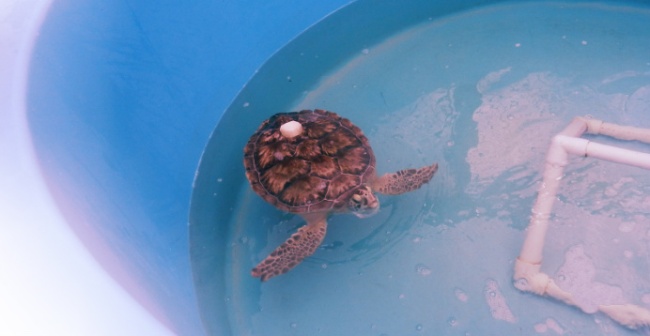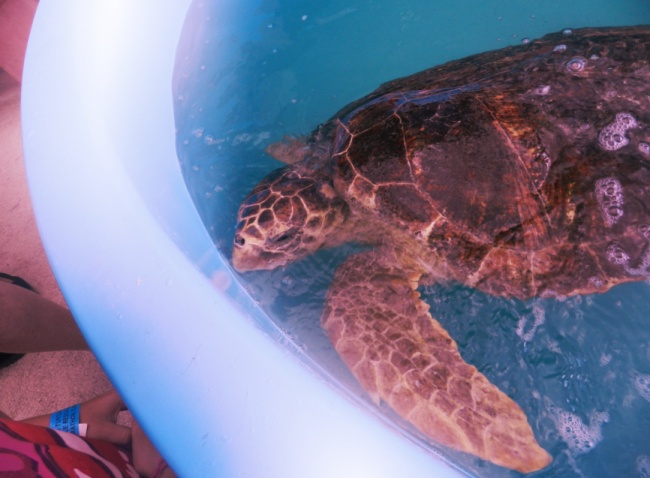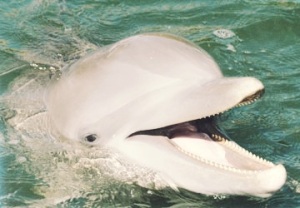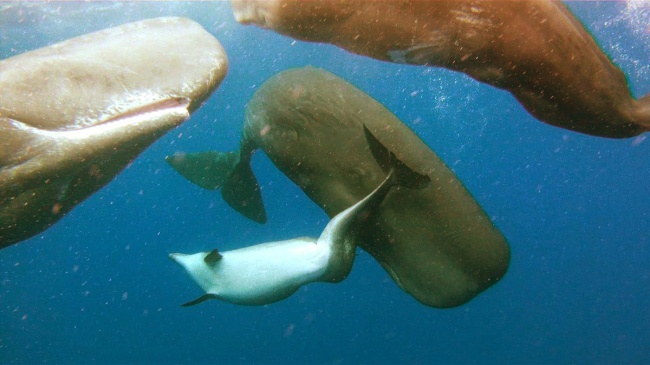This week, my family and I flew to the Keys after a scary sounding travel warning prompted the cancellation of our dive trip to Roatan, Honduras.
Yesterday, we visited the Turtle Hospital in Marathon. Currently home to 36 sea turtles, including an ultra-rare Kemp’s Ridley, the hospital is equipped to rescue, provide veterinary care for, and hopefully release the injured turtles that are called in by local, as well as visiting, good samaritans.
Recently, the center opened its doors to the public through a highly successful education program. Visitors learn the history of the hospital, which coincidentally was opened in 1986 by Richie, a good friend of my dive boat captain today, and get to see the current patients.
Medical care is donated by a generous local vet, renowned for his expertise in sea turtle care. The high-tech equipment found in the hospital was also donated by various hospitals and research centers. The permanent patients, those who are so sick or injured that they will never be able to be released, reside in the now salt water pool, formerly of the Hidden Harbor motel. The most common ailments facing the sea turtle patients are ingestion of trash, boat strikes, and the fibropapilloma virus, which causes tumors.
All volunteer and employees of the hospital cite the release of the sea turtles back into the ocean as the best part of their job. Due to different habitat ranges, different species of sea turtles are released at different locations around the Keys or at the Dry Tortugas. Since its opening, the Turtle Hospital has released over 1000 turtles.
The nearby Dolphin Research Center, also a non-profit, is home to quite a few bottlenose dolphins, several descended from the famous dolphin Flipper. The center not only runs various educational programs with the in-house dolphins, but also helps rescue and rehabilitate stranded or injured whales, dolphins, and manatees.
Research is an important and ongoing part of the DRC. Scientists from around the world have come to view these dolphins in such a unique capacity. For a study on calf social development, the DRC served as the perfect place for research because the mother-calf relationship is so difficult to view in the wild.



